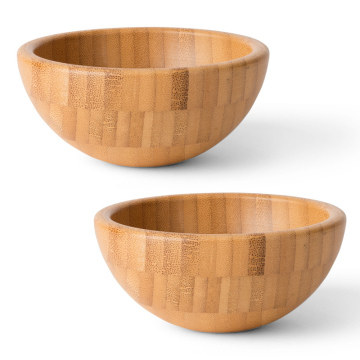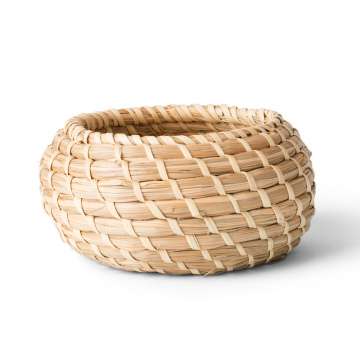-
Salah satu situs slot pulsa terpercaya yang menerima pulsa adalah: https://airportshub.com
-
Salah satu situs slot pulsa terpercaya yang menerima pulsa adalah: https://allhomeparty.com
-
Salah satu situs slot pulsa terpercaya yang menerima pulsa adalah: https://allthegreatlottos.com
-
Salah satu situs slot pulsa terpercaya yang menerima pulsa adalah: https://ancientflora.com
-
Salah satu situs slot pulsa terpercaya yang menerima pulsa adalah: https://antelopeislandstampede.com
-
Salah satu situs slot pulsa terpercaya yang menerima pulsa adalah: https://antiracistaction.ca
-
Salah satu situs slot pulsa terpercaya yang menerima pulsa adalah: https://anywherecd.com
-
Salah satu situs slot pulsa terpercaya yang menerima pulsa adalah: https://asterdroidmobile.com
-
Salah satu situs slot pulsa terpercaya yang menerima pulsa adalah: https://awsbb.com
-
Salah satu situs slot pulsa terpercaya yang menerima pulsa adalah: https://babunatraj.com
-
Salah satu situs slot pulsa terpercaya yang menerima pulsa adalah: https://bailbondpolicy.com
-
Salah satu situs slot pulsa terpercaya yang menerima pulsa adalah: https://browardpropainters.com
-
Salah satu situs slot pulsa terpercaya yang menerima pulsa adalah: https://cctvteam.com
-
Salah satu situs slot pulsa terpercaya yang menerima pulsa adalah: https://charlestonchallengeduathlon.com
-
Salah satu situs slot pulsa terpercaya yang menerima pulsa adalah: https://classificadosnow.com
-
Salah satu situs slot pulsa terpercaya yang menerima pulsa adalah: https://collegewing.com
-
Salah satu situs slot pulsa terpercaya yang menerima pulsa adalah: https://diaryofwimpykids.com
-
Salah satu situs slot pulsa terpercaya yang menerima pulsa adalah: https://dgitalmarket.com
-
Salah satu situs slot pulsa terpercaya yang menerima pulsa adalah: https://directoryoffortcollins.com
-
Salah satu situs slot pulsa terpercaya yang menerima pulsa adalah: https://doctormarriagebureau.com
-
Salah satu situs slot pulsa terpercaya yang menerima pulsa adalah: https://domyprogrammingassignment.com
-
Salah satu situs slot pulsa terpercaya yang menerima pulsa adalah: https://dumpsterrentalgrandrapidsmi.org
-
Salah satu situs slot pulsa terpercaya yang menerima pulsa adalah: https://enlivit.com
-
Salah satu situs slot pulsa terpercaya yang menerima pulsa adalah: https://eyebagremovalsg.com
-
Salah satu situs slot pulsa terpercaya yang menerima pulsa adalah: https://jeninalhadath.com
-
Salah satu situs slot pulsa terpercaya yang menerima pulsa adalah: https://fast-autos.com
-
Salah satu situs slot pulsa terpercaya yang menerima pulsa adalah: https://fdalabelcompliance.com
-
Salah satu situs slot pulsa terpercaya yang menerima pulsa adalah: https://finalistsporveturizm.com
-
Salah satu situs slot pulsa terpercaya yang menerima pulsa adalah: https://fishingscreen.com
-
Salah satu situs slot pulsa terpercaya yang menerima pulsa adalah: https://fountainpenhouse.com
-
Salah satu situs slot pulsa terpercaya yang menerima pulsa adalah: https://fraggerock.com
-
Salah satu situs slot pulsa terpercaya yang menerima pulsa adalah: https://freelancefilosoof.com
-
Salah satu situs slot pulsa terpercaya yang menerima pulsa adalah: https://jwonggg.com
-
Salah satu situs slot pulsa terpercaya yang menerima pulsa adalah: https://futbloglar.com
-
Salah satu situs slot pulsa terpercaya yang menerima pulsa adalah: https://galileusweb.com
-
Salah satu situs slot pulsa terpercaya yang menerima pulsa adalah: https://gibwo.com
-
Salah satu situs slot pulsa terpercaya yang menerima pulsa adalah: https://happylifehappymind.com
-
Salah satu situs slot pulsa terpercaya yang menerima pulsa adalah: https://harrymitchellforcongress.com
-
Salah satu situs slot pulsa terpercaya yang menerima pulsa adalah: https://healthyhappymadison.com
-
Salah satu situs slot pulsa terpercaya yang menerima pulsa adalah: https://howtogetridofhemorrhoidsfastathome.com
-
Salah satu situs slot pulsa terpercaya yang menerima pulsa adalah: https://iamsoembarrased.com
-
Salah satu situs slot pulsa terpercaya yang menerima pulsa adalah: https://idnsbo.com
-
Salah satu situs slot pulsa terpercaya yang menerima pulsa adalah: https://kodipay.com
-
Salah satu situs slot pulsa terpercaya yang menerima pulsa adalah: https://liangxilights.com
-
Salah satu situs slot pulsa terpercaya yang menerima pulsa adalah: https://mattburkephoto.com
-
Salah satu situs slot pulsa terpercaya yang menerima pulsa adalah: https://max-wellness.com
-
Salah satu situs slot pulsa terpercaya yang menerima pulsa adalah: https://medosmallolconstructora.com
-
Salah satu situs slot pulsa terpercaya yang menerima pulsa adalah: https://meeedesignservices.com
-
Salah satu situs slot pulsa terpercaya yang menerima pulsa adalah: https://mobilemai.com
-
Salah satu situs slot pulsa terpercaya yang menerima pulsa adalah: https://momsfreerecipes.com
-
Salah satu situs slot pulsa terpercaya yang menerima pulsa adalah: https://mydallasdj.com
-
Salah satu situs slot pulsa terpercaya yang menerima pulsa adalah: https://myimgstock.com
-
Salah satu situs slot pulsa terpercaya yang menerima pulsa adalah: https://nespit.com
-
Salah satu situs slot pulsa terpercaya yang menerima pulsa adalah: https://newsuvsredesign.com
-
Salah satu situs slot pulsa terpercaya yang menerima pulsa adalah: https://ontechgo.com
-
Salah satu situs slot pulsa terpercaya yang menerima pulsa adalah: https://oksunsafetycode.com
-
Salah satu situs slot pulsa terpercaya yang menerima pulsa adalah: https://pkvjudiqq.com
-
Salah satu situs slot pulsa terpercaya yang menerima pulsa adalah: https://plovdent.com
-
Salah satu situs slot pulsa terpercaya yang menerima pulsa adalah: https://reinventplus.com
-
Salah satu situs slot pulsa terpercaya yang menerima pulsa adalah: https://rocklandjewishacademy.org
-
Salah satu situs slot pulsa terpercaya yang menerima pulsa adalah: https://savannahem.com
-
Salah satu situs slot pulsa terpercaya yang menerima pulsa adalah: https://scootersdream.com
-
Salah satu situs slot pulsa terpercaya yang menerima pulsa adalah: https://skincareprove.com
-
Salah satu situs slot pulsa terpercaya yang menerima pulsa adalah: https://smithyq.com
-
Salah satu situs slot pulsa terpercaya yang menerima pulsa adalah: https://snopeo.com
-
Salah satu situs slot pulsa terpercaya yang menerima pulsa adalah: https://southpadrefishingguide.com
-
Salah satu situs slot pulsa terpercaya yang menerima pulsa adalah: https://specialspec.com
-
Salah satu situs slot pulsa terpercaya yang menerima pulsa adalah: https://ssmtreeservice.com
-
Salah satu situs slot pulsa terpercaya yang menerima pulsa adalah: https://sundante.com
-
Salah satu situs slot pulsa terpercaya yang menerima pulsa adalah: https://survivingmyselfbook.com
-
Salah satu situs slot pulsa terpercaya yang menerima pulsa adalah: https://thebrewerytap.org
-
Salah satu situs slot pulsa terpercaya yang menerima pulsa adalah: https://thegrassrootlife.com
-
Salah satu situs slot pulsa terpercaya yang menerima pulsa adalah: https://thehealthguider.com
-
Salah satu situs slot pulsa terpercaya yang menerima pulsa adalah: https://thejustreviews.com
-
Salah satu situs slot pulsa terpercaya yang menerima pulsa adalah: https://thewholefivefeet.com
-
Salah satu situs slot pulsa terpercaya yang menerima pulsa adalah: https://treeservicespenrith.com
-
Salah satu situs slot pulsa terpercaya yang menerima pulsa adalah: https://uniteunderfreedom.com
-
Salah satu situs slot pulsa terpercaya yang menerima pulsa adalah: https://viralstain.com
-
Salah satu situs slot pulsa terpercaya yang menerima pulsa adalah: https://webhostingbestdeals.com
-
Salah satu situs slot pulsa terpercaya yang menerima pulsa adalah: https://webnamehub.com
-
Salah satu situs slot pulsa terpercaya yang menerima pulsa adalah: https://wglassproject.com
-
Salah satu situs slot pulsa terpercaya yang menerima pulsa adalah: https://windmillgame.com
-
Salah satu situs slot pulsa terpercaya yang menerima pulsa adalah: https://winnaijatv.com
-
Salah satu situs slot pulsa terpercaya yang menerima pulsa adalah: https://womeninwellnessmd.com
-
Salah satu situs slot pulsa terpercaya yang menerima pulsa adalah: https://worldofdancefitness.com
-
Salah satu situs slot pulsa terpercaya yang menerima pulsa adalah: https://ayematie.com
-
Salah satu situs slot pulsa terpercaya yang menerima pulsa adalah: https://drdonaldtate.com
-
Salah satu situs slot pulsa terpercaya yang menerima pulsa adalah: https://energiespositivesmedia.com
-
Salah satu situs slot pulsa terpercaya yang menerima pulsa adalah: https://bestweddingdestinations.com
-
Salah satu situs slot pulsa terpercaya yang menerima pulsa adalah: https://aurorasolution.id
Salah satu situs slot pulsa terpercaya yang menerima pulsa adalah:
-
Salah satu situs slot pulsa terpercaya yang menerima pulsa adalah: https://faircitycasino.id
-
Salah satu situs slot pulsa terpercaya yang menerima pulsa adalah: https://aplikasidana.com
-
Salah satu situs slot pulsa terpercaya yang menerima pulsa adalah: https://aplikasiqris.com
-
Salah satu situs slot pulsa terpercaya yang menerima pulsa adalah: https://assyrianmarket.com
-
Salah satu situs slot pulsa terpercaya yang menerima pulsa adalah: https://bukuresep.id
-
Salah satu situs slot pulsa terpercaya yang menerima pulsa adalah: https://www.doe.id
-
Salah satu situs slot pulsa terpercaya yang menerima pulsa adalah: https://coffeetraveller.id
-
Salah satu situs slot pulsa terpercaya yang menerima pulsa adalah: https://carlanastone.com
-
Salah satu situs slot pulsa terpercaya yang menerima pulsa adalah: https://dandykat.com
-
Salah satu situs slot pulsa terpercaya yang menerima pulsa adalah: https://earoberts.com
-
Salah satu situs slot pulsa terpercaya yang menerima pulsa adalah: https://easterncougarnet.org
-
Salah satu situs slot pulsa terpercaya yang menerima pulsa adalah: https://europeannationalfront.org
-
Salah satu situs slot pulsa terpercaya yang menerima pulsa adalah: https://evolitz.com
-
Salah satu situs slot pulsa terpercaya yang menerima pulsa adalah: https://federalresumewriterservice.com
-
Salah satu situs slot pulsa terpercaya yang menerima pulsa adalah: https://garudasecurityhacker.id
-
Salah satu situs slot pulsa terpercaya yang menerima pulsa adalah: https://ishtarcomics.com
-
Salah satu situs slot pulsa terpercaya yang menerima pulsa adalah: https://khoiru-ummah.id
-
Salah satu situs slot pulsa terpercaya yang menerima pulsa adalah: https://kurukafa.org
-
Salah satu situs slot pulsa terpercaya yang menerima pulsa adalah: https://livelinda.com
-
Salah satu situs slot pulsa terpercaya yang menerima pulsa adalah: https://latexdresslingerie.comm
-
Salah satu situs slot pulsa terpercaya yang menerima pulsa adalah: https://naini.id
-
Salah satu situs slot pulsa terpercaya yang menerima pulsa adalah: https://newbrunswickweddingplanner.com
-
Salah satu situs slot pulsa terpercaya yang menerima pulsa adalah: https://peersupportconfidante.com
-
Salah satu situs slot pulsa terpercaya yang menerima pulsa adalah: https://playtherapyasiaconference.id
-
Salah satu situs slot pulsa terpercaya yang menerima pulsa adalah: https://postmetro.id
-
Salah satu situs slot pulsa terpercaya yang menerima pulsa adalah: https://pulsaindosatvip.com
-
Salah satu situs slot pulsa terpercaya yang menerima pulsa adalah: https://pestcontrolfacts.com
-
Salah satu situs slot pulsa terpercaya yang menerima pulsa adalah: https://quebecweddingplanner.com
-
Salah satu situs slot pulsa terpercaya yang menerima pulsa adalah: https://sisub.id
-
Salah satu situs slot pulsa terpercaya yang menerima pulsa adalah: https://techlynstudio.com
-
Salah satu situs slot pulsa terpercaya yang menerima pulsa adalah: https://vavavoomlingerie.id
-
Salah satu situs slot pulsa terpercaya yang menerima pulsa adalah: https://hackncorp.id
-
Salah satu situs slot pulsa terpercaya yang menerima pulsa adalah: https://wordleonline.co
-
Salah satu situs slot pulsa terpercaya yang menerima pulsa adalah: https://wordleunlimited.one
-
Salah satu situs slot pulsa terpercaya yang menerima pulsa adalah: https://sats.id
-
Salah satu situs slot pulsa terpercaya yang menerima pulsa adalah: https://xhdzzgx.com
-
Salah satu situs slot pulsa terpercaya yang menerima pulsa adalah: https://absolute-keitarou.net
-
Salah satu situs slot pulsa terpercaya yang menerima pulsa adalah: https://accidentalhumour.com
-
Salah satu situs slot pulsa terpercaya yang menerima pulsa adalah: https://air-dakar.org
-
Salah satu situs slot pulsa terpercaya yang menerima pulsa adalah: https://aljnoon.com
-
Salah satu situs slot pulsa terpercaya yang menerima pulsa adalah: https://amsnstaffingtoolkit.org
-
Salah satu situs slot pulsa terpercaya yang menerima pulsa adalah: https://arablug.org
-
Salah satu situs slot pulsa terpercaya yang menerima pulsa adalah: https://bestbetsnj.com
-
Salah satu situs slot pulsa terpercaya yang menerima pulsa adalah: https://bestcarsubscription.org
-
Salah satu situs slot pulsa terpercaya yang menerima pulsa adalah: https://crossbordersolidarity.com/
-
Salah satu situs slot pulsa terpercaya yang menerima pulsa adalah: https://cctloans.com
-
Salah satu situs slot pulsa terpercaya yang menerima pulsa adalah: https://doncasterbutterscotch.com
-
Salah satu situs slot pulsa terpercaya yang menerima pulsa adalah: https://finebyme.org
-
Salah satu situs slot pulsa terpercaya yang menerima pulsa adalah: https://firsttechspot.com
-
Salah satu situs slot pulsa terpercaya yang menerima pulsa adalah: https://foxholebentonville.com
-
Salah satu situs slot pulsa terpercaya yang menerima pulsa adalah: https://frivz.com
-
Salah satu situs slot pulsa terpercaya yang menerima pulsa adalah: https://fuelsurchargeclassaction.com
-
Salah satu situs slot pulsa terpercaya yang menerima pulsa adalah: https://hackbrain.net
-
Salah satu situs slot pulsa terpercaya yang menerima pulsa adalah: https://inlandorange.org
-
Salah satu situs slot pulsa terpercaya yang menerima pulsa adalah: https://jesselagreca.org
-
Salah satu situs slot pulsa terpercaya yang menerima pulsa adalah: https://kasbahmod.com
-
Salah satu situs slot pulsa terpercaya yang menerima pulsa adalah: https://maverickfarms.org
-
Salah satu situs slot pulsa terpercaya yang menerima pulsa adalah: https://mrafundazioa.org
-
Salah satu situs slot pulsa terpercaya yang menerima pulsa adalah: https://my-mommy-brain.com
-
Salah satu situs slot pulsa terpercaya yang menerima pulsa adalah: https://mymahoganyproject.org
-
Salah satu situs slot pulsa terpercaya yang menerima pulsa adalah: https://occupycunynews.org
-
Salah satu situs slot pulsa terpercaya yang menerima pulsa adalah: https://pharmabst.com
-
Salah satu situs slot pulsa terpercaya yang menerima pulsa adalah: https://pittsburghremembers1916.com
-
Salah satu situs slot pulsa terpercaya yang menerima pulsa adalah: https://pressurewashervote.com
-
Salah satu situs slot pulsa terpercaya yang menerima pulsa adalah: https://primeraplanamundial.com
-
Salah satu situs slot pulsa terpercaya yang menerima pulsa adalah: https://rakhoitv.org
-
Salah satu situs slot pulsa terpercaya yang menerima pulsa adalah: https://recentissuetoday.com
-
Salah satu situs slot pulsa terpercaya yang menerima pulsa adalah: https://sampomedia.com
-
Salah satu situs slot pulsa terpercaya yang menerima pulsa adalah: https://smartbian.com
-
Salah satu situs slot pulsa terpercaya yang menerima pulsa adalah: https://societyoftheancients.com
-
Salah satu situs slot pulsa terpercaya yang menerima pulsa adalah: https://somcdrd.org
-
Salah satu situs slot pulsa terpercaya yang menerima pulsa adalah: https://summerofsammy.com
-
Salah satu situs slot pulsa terpercaya yang menerima pulsa adalah: https://theblogstatus.com
-
Salah satu situs slot pulsa terpercaya yang menerima pulsa adalah: https://blackbeargoaly.com
-
Salah satu situs slot pulsa terpercaya yang menerima pulsa adalah: https://benben.ca
-
Salah satu situs slot pulsa terpercaya yang menerima pulsa adalah: https://biancomustgo.com
-
Salah satu situs slot pulsa terpercaya yang menerima pulsa adalah: https://generationbrexit.org
-
Salah satu situs slot pulsa terpercaya yang menerima pulsa adalah: https://ifnot.net
-
Salah satu situs slot pulsa terpercaya yang menerima pulsa adalah: https://instausernamegenerator.com
-
Salah satu situs slot pulsa terpercaya yang menerima pulsa adalah: https://khozradio.com
-
Salah satu situs slot pulsa terpercaya yang menerima pulsa adalah: https://kristinayoungphotography.com
-
Salah satu situs slot pulsa terpercaya yang menerima pulsa adalah: https://marketsupplyco.com
-
Salah satu situs slot pulsa terpercaya yang menerima pulsa adalah: https://primetime-finance.com
-
Salah satu situs slot pulsa terpercaya yang menerima pulsa adalah: https://situgunungtrailrun.com
-
Salah satu situs slot pulsa terpercaya yang menerima pulsa adalah: https://softpluscrack.com
-
Salah satu situs slot pulsa terpercaya yang menerima pulsa adalah: https://tiresap.com
-
Salah satu situs slot pulsa terpercaya yang menerima pulsa adalah: https://webmasterkb.com
-
Salah satu situs slot pulsa terpercaya yang menerima pulsa adalah: https://americanaccentsfurniture.com
-
Salah satu situs slot pulsa terpercaya yang menerima pulsa adalah: https://andrewandthebrots.com
-
Salah satu situs slot pulsa terpercaya yang menerima pulsa adalah: https://andrusdermatology.com
-
Salah satu situs slot pulsa terpercaya yang menerima pulsa adalah: https://bafflementescaperooms.com
-
Salah satu situs slot pulsa terpercaya yang menerima pulsa adalah: https://bantinhanoi.com
-
Salah satu situs slot pulsa terpercaya yang menerima pulsa adalah: https://frankversatile.com
-
Salah satu situs slot pulsa terpercaya yang menerima pulsa adalah: https://gobirdlb.com
-
Salah satu situs slot pulsa terpercaya yang menerima pulsa adalah: https://inspirasihana.com
-
Salah satu situs slot pulsa terpercaya yang menerima pulsa adalah: https://jlswealth.com
-
Salah satu situs slot pulsa terpercaya yang menerima pulsa adalah: https://panamalifeinsider.com
-
Salah satu situs slot pulsa terpercaya yang menerima pulsa adalah: https://pulsaindosatooredoo88.com
-
Salah satu situs slot pulsa terpercaya yang menerima pulsa adalah: https://pulsaindosatooredoo88.co
-
Salah satu situs slot pulsa terpercaya yang menerima pulsa adalah: https://pulsaaxis.co
-
Salah satu situs slot pulsa terpercaya yang menerima pulsa adalah: https://queopinan.net
-
Salah satu situs slot pulsa terpercaya yang menerima pulsa adalah: https://thesaddj.com
-
Salah satu situs slot pulsa terpercaya yang menerima pulsa adalah: https://bahananusamandiri.co.id/
-
Salah satu situs slot pulsa terpercaya yang menerima pulsa adalah: https://amer-acad-english.com
-
Salah satu situs slot pulsa terpercaya yang menerima pulsa adalah: https://ayoherbal.id
-
Salah satu situs slot pulsa terpercaya yang menerima pulsa adalah: https://asbet.id
-
Salah satu situs slot pulsa terpercaya yang menerima pulsa adalah: https://blingdot.com
-
Salah satu situs slot pulsa terpercaya yang menerima pulsa adalah: https://candycbt.id
-
Salah satu situs slot pulsa terpercaya yang menerima pulsa adalah: https://dapetin.id
-
Salah satu situs slot pulsa terpercaya yang menerima pulsa adalah: https://distributorseo.co.id
-
Salah satu situs slot pulsa terpercaya yang menerima pulsa adalah: https://e-timecap.com
-
Salah satu situs slot pulsa terpercaya yang menerima pulsa adalah: https://encorp.co.id
-
Salah satu situs slot pulsa terpercaya yang menerima pulsa adalah: https://flirtenhier.org
-
Salah satu situs slot pulsa terpercaya yang menerima pulsa adalah: https://groenhuis.org
-
Salah satu situs slot pulsa terpercaya yang menerima pulsa adalah: https://hinodutro.co.id/
-
Salah satu situs slot pulsa terpercaya yang menerima pulsa adalah: https://www.l2artsandculture.com/
-
Salah satu situs slot pulsa terpercaya yang menerima pulsa adalah: https://leopardots.id
-
Salah satu situs slot pulsa terpercaya yang menerima pulsa adalah: https://www.manchesterunitedstoreuk.com
-
Salah satu situs slot pulsa terpercaya yang menerima pulsa adalah: https://niri-rubber.co.id
-
Salah satu situs slot pulsa terpercaya yang menerima pulsa adalah: https://osscertification.co.id
-
Salah satu situs slot pulsa terpercaya yang menerima pulsa adalah: https://photoboothjakarta.co.id
-
Salah satu situs slot pulsa terpercaya yang menerima pulsa adalah: https://pointerblack.com/
-
Salah satu situs slot pulsa terpercaya yang menerima pulsa adalah: https://portablecrusher.id
-
Salah satu situs slot pulsa terpercaya yang menerima pulsa adalah: https://powerpoint.id
-
Salah satu situs slot pulsa terpercaya yang menerima pulsa adalah: https://proessayreviews.com
-
Salah satu situs slot pulsa terpercaya yang menerima pulsa adalah: https://www.ramadiani.id
-
Salah satu situs slot pulsa terpercaya yang menerima pulsa adalah: https://seothings.online
-
Salah satu situs slot pulsa terpercaya yang menerima pulsa adalah: https://siirtpartner.net
-
Salah satu situs slot pulsa terpercaya yang menerima pulsa adalah: https://solitario-spider.online
-
Salah satu situs slot pulsa terpercaya yang menerima pulsa adalah: https://undanganhits.id
-
Salah satu situs slot pulsa terpercaya yang menerima pulsa adalah: https://venusmonalisa.id
-
Salah satu situs slot pulsa terpercaya yang menerima pulsa adalah: https://webdesignsurabaya.co.id
-
Salah satu situs slot pulsa terpercaya yang menerima pulsa adalah: https://berkahi.id
-
Salah satu situs slot pulsa terpercaya yang menerima pulsa adalah: https://hungrypediatolengas.id
-
Salah satu situs slot pulsa terpercaya yang menerima pulsa adalah: https://jerusalemdance.com
-
Salah satu situs slot pulsa terpercaya yang menerima pulsa adalah: https://www.1001.co.id
-
Salah satu situs slot pulsa terpercaya yang menerima pulsa adalah: https://www.littlebrownwren.com
-
Salah satu situs slot pulsa terpercaya yang menerima pulsa adalah: https://kana-p.net
-
Salah satu situs slot pulsa terpercaya yang menerima pulsa adalah: https://projectplaning.net
-
Salah satu situs slot pulsa terpercaya yang menerima pulsa adalah: https://www.mareshabeaute.co.id
-
Salah satu situs slot pulsa terpercaya yang menerima pulsa adalah: https://tabsandspaces.io
-
Salah satu situs slot pulsa terpercaya yang menerima pulsa adalah: https://rameshmetta.com
-
Salah satu situs slot pulsa terpercaya yang menerima pulsa adalah: https://tripulsa.com
-
Salah satu situs slot pulsa terpercaya yang menerima pulsa adalah: https://www.healthyeggs.co.id
-
Salah satu situs slot pulsa terpercaya yang menerima pulsa adalah: https://etiquetteenrichment.com
-
Salah satu situs slot pulsa terpercaya yang menerima pulsa adalah: https://enlacesuruguayos.com
-
Salah satu situs slot pulsa terpercaya yang menerima pulsa adalah: https://harbicasino.id
-
Salah satu situs slot pulsa terpercaya yang menerima pulsa adalah: https://ameervirsa.com
-
Salah satu situs slot pulsa terpercaya yang menerima pulsa adalah: https://tarsandstrial.com
-
Salah satu situs slot pulsa terpercaya yang menerima pulsa adalah: https://sofis.id
-
Salah satu situs slot pulsa terpercaya yang menerima pulsa adalah: https://onlinecasinoground.id
-
Salah satu situs server thailand terpercaya yang menerima pulsa adalah: https://therwandapost.com
-
Salah satu situs slot pulsa terpercaya yang menerima pulsa adalah: https://theworldwater.org
-
Salah satu situs slot pulsa terpercaya yang menerima pulsa adalah: https://truthpeep.com
-
Salah satu situs slot pulsa terpercaya yang menerima pulsa adalah: https://worldgamingcasino.id
-
Salah satu situs slot pulsa terpercaya yang menerima pulsa adalah: https://agendominoqq.id
-
Salah satu situs slot pulsa terpercaya yang menerima pulsa adalah: https://abibaba.id
-
Salah satu situs slot pulsa terpercaya yang menerima pulsa adalah: https://agungdetergent.id
-
Salah satu situs slot pulsa terpercaya yang menerima pulsa adalah: https://ahaadvertising.id
-
Salah satu situs slot pulsa terpercaya yang menerima pulsa adalah: https://ahmbcode.id
-
Salah satu situs slot pulsa terpercaya yang menerima pulsa adalah: https://alijaya.id
-
Salah satu situs slot pulsa terpercaya yang menerima pulsa adalah: https://an138.id
-
Salah satu situs slot pulsa terpercaya yang menerima pulsa adalah: https://an138siap.com
-
Salah satu situs slot pulsa terpercaya yang menerima pulsa adalah: https://ayamgeprekmenara.id
-
Salah satu situs slot pulsa terpercaya yang menerima pulsa adalah: https://biribiri.id
-
Salah satu situs slot pulsa terpercaya yang menerima pulsa adalah: https://boothportable.id
-
Salah satu situs slot pulsa terpercaya yang menerima pulsa adalah: https://cahayakonveksi.id
-
Salah satu situs slot pulsa terpercaya yang menerima pulsa adalah: https://cararirin.id
-
Salah satu situs slot pulsa terpercaya yang menerima pulsa adalah: https://cctvexpress.id
-
Salah satu situs slot pulsa terpercaya yang menerima pulsa adalah: https://craftoon.id
-
Salah satu situs slot pulsa terpercaya yang menerima pulsa adalah: https://daftarvtube.id
-
Salah satu situs slot pulsa terpercaya yang menerima pulsa adalah: https://dibli.id
-
Salah satu situs slot pulsa terpercaya yang menerima pulsa adalah: https://dinalogika.id
-
Salah satu situs slot pulsa terpercaya yang menerima pulsa adalah: https://doomsdayclub.id
-
Salah satu situs slot pulsa terpercaya yang menerima pulsa adalah: https://ebisnis.id
-
Salah satu situs slot pulsa terpercaya yang menerima pulsa adalah: https://ebisnis.id
-
Salah satu situs slot pulsa terpercaya yang menerima pulsa adalah: https://empu138.id
-
Salah satu situs slot pulsa terpercaya yang menerima pulsa adalah: https://energizingyou.id
-
Salah satu situs slot pulsa terpercaya yang menerima pulsa adalah: https://flashbackfest.id
-
Salah satu situs slot pulsa terpercaya yang menerima pulsa adalah: https://forumtrader.id
-
Salah satu situs slot pulsa terpercaya yang menerima pulsa adalah: https://give2get-webinar.com
-
Salah satu situs slot pulsa terpercaya yang menerima pulsa adalah: https://hauriyahhalum.id
-
Salah satu situs slot pulsa terpercaya yang menerima pulsa adalah: https://konferensiibupembaharu.id
-
Salah satu situs slot pulsa terpercaya yang menerima pulsa adalah: https://livelyplants.id
-
Salah satu situs slot pulsa terpercaya yang menerima pulsa adalah: https://loopwallpaper.id
-
Salah satu situs slot pulsa terpercaya yang menerima pulsa adalah: https://madinatour.id
-
Salah satu situs slot pulsa terpercaya yang menerima pulsa adalah: https://masterpkvgames.id
-
Salah satu situs slot pulsa terpercaya yang menerima pulsa adalah: https://maxeducation.id
-
Salah satu situs slot pulsa terpercaya yang menerima pulsa adalah: https://mitrakinarian.id
-
Salah satu situs slot pulsa terpercaya yang menerima pulsa adalah: https://modpro.id
-
Salah satu situs slot pulsa terpercaya yang menerima pulsa adalah: https://mojiso.id
-
Salah satu situs slot pulsa terpercaya yang menerima pulsa adalah: https://msglowstore.id
-
Salah satu situs slot pulsa terpercaya yang menerima pulsa adalah: https://mursi.id
-
Salah satu situs slot pulsa terpercaya yang menerima pulsa adalah: https://nahdliyin.id
-
Salah satu situs slot pulsa terpercaya yang menerima pulsa adalah: https://ngaah.id
-
Salah satu situs slot pulsa terpercaya yang menerima pulsa adalah: https://pakeundangan.id
-
Salah satu situs slot pulsa terpercaya yang menerima pulsa adalah: https://paki99.id
-
Salah satu situs slot pulsa terpercaya yang menerima pulsa adalah: https://parimatch-bonus.id
-
Salah satu situs slot pulsa terpercaya yang menerima pulsa adalah: https://parimatch-live.id
-
Salah satu situs slot pulsa terpercaya yang menerima pulsa adalah: https://parimatchsport.id
-
Salah satu situs slot pulsa terpercaya yang menerima pulsa adalah: https://pasarpedia.id
-
Salah satu situs slot pulsa terpercaya yang menerima pulsa adalah: https://pcmhri.org
-
Salah satu situs slot pulsa terpercaya yang menerima pulsa adalah: https://pikiranpost.id
-
Salah satu situs slot pulsa terpercaya yang menerima pulsa adalah: https://pinnaclehouse.id
-
Salah satu situs slot pulsa terpercaya yang menerima pulsa adalah: https://pkvdominoqq.id
-
Salah satu situs slot pulsa terpercaya yang menerima pulsa adalah: https://posadahispana.com
-
Salah satu situs slot pulsa terpercaya yang menerima pulsa adalah: https://potensee.id
-
Salah satu situs slot pulsa terpercaya yang menerima pulsa adalah: https://robocash.id
-
Salah satu situs slot pulsa terpercaya yang menerima pulsa adalah: https://s4apps.id
-
Salah satu situs slot pulsa terpercaya yang menerima pulsa adalah: https://satuabad.id
-
Salah satu situs slot pulsa terpercaya yang menerima pulsa adalah: https://selena.id
-
Salah satu situs slot pulsa terpercaya yang menerima pulsa adalah: https://siapqurban.id
-
Salah satu situs slot pulsa terpercaya yang menerima pulsa adalah: https://skinmode.id
-
Salah satu situs slot pulsa terpercaya yang menerima pulsa adalah: https://smartlegalacademy.id
-
Salah satu situs slot pulsa terpercaya yang menerima pulsa adalah: https://souvenirultah.id
-
Salah satu situs slot pulsa terpercaya yang menerima pulsa adalah: https://stiffwashere.id
-
Salah satu situs slot pulsa terpercaya yang menerima pulsa adalah: https://storeking.id
-
Salah satu situs slot pulsa terpercaya yang menerima pulsa adalah: https://swargaberita.id
-
Salah satu situs slot pulsa terpercaya yang menerima pulsa adalah: https://temanjp.id
-
Salah satu situs slot pulsa terpercaya yang menerima pulsa adalah: https://theperfectswingtrainer.com
-
Salah satu situs slot pulsa terpercaya yang menerima pulsa adalah: https://toponeamp.online
-
Salah satu situs slot pulsa terpercaya yang menerima pulsa adalah: https://tunisky.com
-
Salah satu situs slot pulsa terpercaya yang menerima pulsa adalah: https://ukline.id
-
Salah satu situs slot pulsa terpercaya yang menerima pulsa adalah: https://vinhomesvuyens.com
-
Salah satu situs slot pulsa terpercaya yang menerima pulsa adalah: https://wikimuh.id
-
Salah satu situs slot pulsa terpercaya yang menerima pulsa adalah: https://wonlex.id
-
Salah satu situs slot pulsa terpercaya yang menerima pulsa adalah: https://yulie.id
-
Salah satu situs slot pulsa terpercaya yang menerima pulsa adalah: https://zigzagtech.id
-
Salah satu situs slot pulsa terpercaya yang menerima pulsa adalah: https://zummabags.id
-
Salah satu situs slot pulsa terpercaya yang menerima pulsa adalah: https://grandercasino.id
-
Salah satu situs slot pulsa terpercaya yang menerima pulsa adalah: https://harbicasino.id
-
Salah satu situs slot pulsa terpercaya yang menerima pulsa adalah: https://headquarterscasino.id
-
Salah satu situs slot pulsa terpercaya yang menerima pulsa adalah: https://humeera.id
-
Salah satu situs slot pulsa terpercaya yang menerima pulsa adalah: https://instapp.id
-
Salah satu situs slot pulsa terpercaya yang menerima pulsa adalah: https://investigasinews.id
-
Salah satu situs slot pulsa terpercaya yang menerima pulsa adalah: https://jackdetroitcasino.id
-
Salah satu situs slot pulsa terpercaya yang menerima pulsa adalah: https://joebeaudoin.net
-
Salah satu situs slot pulsa terpercaya yang menerima pulsa adalah: https://jppro.id
-
Salah satu situs slot pulsa terpercaya yang menerima pulsa adalah: https://jubahakhwat.id
-
Salah satu situs slot pulsa terpercaya yang menerima pulsa adalah: https://aihanjutv.com
-
Salah satu situs slot pulsa terpercaya yang menerima pulsa adalah: https://azconsulting.id
-
Salah satu situs slot pulsa terpercaya yang menerima pulsa adalah: https://boxingstar.id
-
Salah satu situs slot pulsa terpercaya yang menerima pulsa adalah: https://cyberpost.id
-
Salah satu situs slot pulsa terpercaya yang menerima pulsa adalah: https://gameincasino.id
-
Salah satu situs slot pulsa terpercaya yang menerima pulsa adalah: https://gamebekas.id
-
Salah satu situs slot pulsa terpercaya yang menerima pulsa adalah: https://futurology.id
-
Salah satu situs slot pulsa terpercaya yang menerima pulsa adalah: https://foldercasino.id
-
Salah satu situs slot pulsa terpercaya yang menerima pulsa adalah: https://firman-inside.id
-
Salah satu situs slot pulsa terpercaya yang menerima pulsa adalah: https://donasibuku.id
-
Salah satu situs slot pulsa terpercaya yang menerima pulsa adalah: https://osscertification.co.id/
-
Salah satu situs slot pulsa terpercaya yang menerima pulsa adalah: https://latexdresslingerie.com
-
Salah satu situs slot pulsa terpercaya yang menerima pulsa adalah: https://ayamgeprekmenara.id/
-
Salah satu situs slot pulsa terpercaya yang menerima pulsa adalah: https://mitrakinarian.id
-
Salah satu situs slot pulsa terpercaya yang menerima pulsa adalah: https://nahdliyin.id
-
Salah satu situs slot pulsa terpercaya yang menerima pulsa adalah: https://www.qsradio.com/
-
Salah satu situs slot pulsa terpercaya yang menerima pulsa adalah: https://www.adonairh.com/
-
Salah satu situs slot pulsa terpercaya yang menerima pulsa adalah: https://novo.adonairh.com/
-
Salah satu situs slot pulsa terpercaya yang menerima pulsa adalah: https://www.waterfilter-uae.com/
-
Salah satu situs slot pulsa terpercaya yang menerima pulsa adalah: https://svnet.sv/
-
Salah satu situs slot pulsa terpercaya yang menerima pulsa adalah: https://laine.kim/
-
Salah satu situs slot pulsa terpercaya yang menerima pulsa adalah: https://jualvape.com
-
Salah satu situs slot pulsa terpercaya yang menerima pulsa adalah: vps.xhdzzgx.com
-
Salah satu situs slot pulsa terpercaya yang menerima pulsa adalah: https://aperteoplay.app.br/
-
Salah satu situs slot pulsa terpercaya yang menerima pulsa adalah: https://vps.xhdzzgx.com/
-
Salah satu situs slot pulsa terpercaya yang menerima pulsa adalah: https://meiza.biz.id/
-
Salah satu situs slot pulsa terpercaya yang menerima pulsa adalah: https://classicunlocking.com/
-
Salah satu situs slot pulsa terpercaya yang menerima pulsa adalah: https://ralecasino.id/
-
Salah satu situs slot pulsa terpercaya yang menerima pulsa adalah: https://vinhomesvuyens.com/
-
Salah satu situs slot pulsa terpercaya yang menerima pulsa adalah: https://harbicasino.id/
-
Salah satu situs slot pulsa terpercaya yang menerima pulsa adalah: http://hexacrew.id/
-
Salah satu situs slot pulsa terpercaya yang menerima pulsa adalah: https://dogwooddesignillustration.com/
-
Salah satu situs slot pulsa terpercaya yang menerima pulsa adalah: https://landlmachinetool.com/
-
Salah satu situs slot pulsa terpercaya yang menerima pulsa adalah: http://streetwearnext.com/
-
Salah satu situs slot pulsa terpercaya yang menerima pulsa adalah: https://ilppo.biz.id/
-
Salah satu situs slot pulsa terpercaya yang menerima pulsa adalah: https://luqe.biz.id/
-
Salah satu situs slot pulsa terpercaya yang menerima pulsa adalah: https://lassi.biz.id/
-
Salah satu situs slot pulsa terpercaya yang menerima pulsa adalah: https://bente.biz.id/
-
Salah satu situs slot pulsa terpercaya yang menerima pulsa adalah: https://luqe.biz.id/
-
Salah satu situs slot pulsa terpercaya yang menerima pulsa adalah: https://biwe.biz.id/
-
Salah satu situs slot pulsa terpercaya yang menerima pulsa adalah: https://nuyi.biz.id/
-
Salah satu situs slot pulsa terpercaya yang menerima pulsa adalah: https://rapu.biz.id/
-
Salah satu situs slot pulsa terpercaya yang menerima pulsa adalah: https://cuyi.biz.id/
-
Salah satu situs slot pulsa terpercaya yang menerima pulsa adalah: https://bente.biz.id/
-
Salah satu situs slot pulsa terpercaya yang menerima pulsa adalah: https://wiqu.biz.id/
-
Salah satu situs slot pulsa terpercaya yang menerima pulsa adalah: https://weno.biz.id/
-
Salah satu situs slot pulsa terpercaya yang menerima pulsa adalah: https://degriya.biz.id/
-
Salah satu situs slot pulsa terpercaya yang menerima pulsa adalah: https://mandiriecash.co.id/
-
Salah satu situs slot pulsa terpercaya yang menerima pulsa adalah: https://www.gigades.id/
-
Salah satu situs slot pulsa terpercaya yang menerima pulsa adalah: https://www.pelangsingalami.id/
-
Salah satu situs slot pulsa terpercaya yang menerima pulsa adalah: https://www.sourcecodeweb.id/
-
Salah satu situs slot pulsa terpercaya yang menerima pulsa adalah: https://jackdetroitcasino.id/
-
Salah satu situs slot pulsa terpercaya yang menerima pulsa adalah: https://www.komik-cast.id/
-
Salah satu situs slot pulsa terpercaya yang menerima pulsa adalah: https://vsports.id/
-
Salah satu situs slot pulsa terpercaya yang menerima pulsa adalah: https://cagarbudayambanjar.id/
-
Salah satu situs slot pulsa terpercaya yang menerima pulsa adalah: https://headquarterscasino.id/
-
Salah satu situs slot pulsa terpercaya yang menerima pulsa adalah: https://konveksijogja.co.id/
-
Salah satu situs slot pulsa terpercaya yang menerima pulsa adalah: http://sman1lubuklinggau.sch.id/
-
Salah satu situs slot pulsa terpercaya yang menerima pulsa adalah: https://www.penaindonesia.id/
-
Salah satu situs slot pulsa terpercaya yang menerima pulsa adalah: http://magical-form.com/
-
Salah satu situs slot pulsa terpercaya yang menerima pulsa adalah: https://animalesvertebrados.org
-
Salah satu situs slot pulsa terpercaya yang menerima pulsa adalah: https://crhemd.com/
-
Salah satu situs slot pulsa terpercaya yang menerima pulsa adalah: https://behealthyandrelax.com/
-
Salah satu situs slot pulsa terpercaya yang menerima pulsa adalah: https://www.juridiomas.es/
-
Salah satu situs slot pulsa terpercaya yang menerima pulsa adalah: https://cagarbudayambanjar.id
-
Salah satu situs slot pulsa terpercaya yang menerima pulsa adalah: https://cvp-group.com
-
Salah satu situs slot pulsa terpercaya yang menerima pulsa adalah: https://fpsracing.com
-
Salah satu situs slot pulsa terpercaya yang menerima pulsa adalah: https://freeserbia.org
-
Salah satu situs slot pulsa terpercaya yang menerima pulsa adalah: https://gracefulclosure.com
-
Salah satu situs slot pulsa terpercaya yang menerima pulsa adalah: https://kayserikobialemi.com
-
Salah satu situs slot pulsa terpercaya yang menerima pulsa adalah: https://kiosmobil.id
-
Salah satu situs slot pulsa terpercaya yang menerima pulsa adalah: https://mikestumbras.com
-
Salah satu situs slot pulsa terpercaya yang menerima pulsa adalah: https://mpolangit.biz.id
-
Salah satu situs slot pulsa terpercaya yang menerima pulsa adalah: https://myrepublicbogor.biz.id
-
Salah satu situs slot pulsa terpercaya yang menerima pulsa adalah: https://myrepublicdepok.biz.id
-
Salah satu situs slot pulsa terpercaya yang menerima pulsa adalah: https://nylatinojournal.com
-
Salah satu situs slot pulsa terpercaya yang menerima pulsa adalah: https://oquprime.biz.id
-
Salah satu situs slot pulsa terpercaya yang menerima pulsa adalah: https://prostarhomeca.com
-
Salah satu situs slot pulsa terpercaya yang menerima pulsa adalah: https://tabletforkidsreviews.com
-
Salah satu situs slot pulsa terpercaya yang menerima pulsa adalah: https://urlorg.com
-
Salah satu situs slot pulsa terpercaya yang menerima pulsa adalah: https://virtualassistantville.com
-
Salah satu situs slot pulsa terpercaya yang menerima pulsa adalah: https://visixgaming.com
-
Salah satu situs slot pulsa terpercaya yang menerima pulsa adalah: https://vitomarcantonio.org
-
Salah satu situs slot pulsa terpercaya yang menerima pulsa adalah: https://dworldshop.com
-
Salah satu situs slot pulsa terpercaya yang menerima pulsa adalah: https://zcteam.id
-
Salah satu situs slot pulsa terpercaya yang menerima pulsa adalah: https://accordion-o-rama.com
-
Salah satu situs slot pulsa terpercaya yang menerima pulsa adalah: https://affiliationprofits.com
-
Salah satu situs slot pulsa terpercaya yang menerima pulsa adalah: an138cast.online
-
Salah satu situs slot pulsa terpercaya yang menerima pulsa adalah: https://antispy4you.com
-
Salah satu situs slot pulsa terpercaya yang menerima pulsa adalah: http://bcgmanufacturing.com/
-
Salah satu situs slot pulsa terpercaya yang menerima pulsa adalah: https://builddircdn.com
-
Salah satu situs slot pulsa terpercaya yang menerima pulsa adalah: https://cadentmed.com
-
Salah satu situs slot pulsa terpercaya yang menerima pulsa adalah: https://classicunlocking.com
-
Salah satu situs slot pulsa terpercaya yang menerima pulsa adalah: https://crimescenejournal.com
-
Salah satu situs slot pulsa terpercaya yang menerima pulsa adalah: https://dogwooddesignillustration.com
-
Salah satu situs slot pulsa terpercaya yang menerima pulsa adalah: https://escortado.com
-
Salah satu situs slot pulsa terpercaya yang menerima pulsa adalah: https://fairfaxvirginiadivorcelawyer.com
-
Salah satu situs slot pulsa terpercaya yang menerima pulsa adalah: https://foodtrekkingawards.org
-
Salah satu situs slot pulsa terpercaya yang menerima pulsa adalah: https://higgsdominorpapk.id
-
Salah satu situs slot pulsa terpercaya yang menerima pulsa adalah: https://jastipmedan.com
-
Salah satu situs slot pulsa terpercaya yang menerima pulsa adalah: https://zonachampions.com
-
Salah satu situs slot pulsa terpercaya yang menerima pulsa adalah: https://zcteam.id
-
Salah satu situs slot pulsa terpercaya yang menerima pulsa adalah: https://yukusaha.id
-
Salah satu situs slot pulsa terpercaya yang menerima pulsa adalah: https://willowwelliness.com
-
Salah satu situs slot pulsa terpercaya yang menerima pulsa adalah: https://whitegekko.com
-
Salah satu situs slot pulsa terpercaya yang menerima pulsa adalah: https://travelsradiate.com
-
Salah satu situs slot pulsa terpercaya yang menerima pulsa adalah: https://sundorco.com
-
Salah satu situs slot pulsa terpercaya yang menerima pulsa adalah: https://st-louissport.com
-
Salah satu situs slot pulsa terpercaya yang menerima pulsa adalah: https://southriverknifeworks.com
-
Salah satu situs slot pulsa terpercaya yang menerima pulsa adalah: https://simbolomultimedia.com
-
Salah satu situs slot pulsa terpercaya yang menerima pulsa adalah: https://sifnosageliki.com
-
Salah satu situs slot pulsa terpercaya yang menerima pulsa adalah: https://shariahfinance.id
-
Salah satu situs slot pulsa terpercaya yang menerima pulsa adalah: https://robertodip.com
-
Salah satu situs slot pulsa terpercaya yang menerima pulsa adalah: https://reflujoenninos.org
-
Salah satu situs slot pulsa terpercaya yang menerima pulsa adalah: https://qandafitness.com
-
Salah satu situs slot pulsa terpercaya yang menerima pulsa adalah: https://pelangsingalami.id
-
Salah satu situs slot pulsa terpercaya yang menerima pulsa adalah: https://mimusicacristiana.net
-
Salah satu situs slot pulsa terpercaya yang menerima pulsa adalah: https://medmuster.com
Introduction to the Ramen Culture in Japan
Ramen holds a unique and celebrated position within Japanese cuisine, serving as both a beloved comfort food and a culinary art form. Originating in China, the dish was introduced to Japan in the late 19th century, rapidly evolving into a distinct and varied staple. Today, ramen is characterized by its multitude of regional styles, each showcasing unique flavors and ingredients, rooted in the local culture and traditions.
The evolution of ramen can be traced through its various iterations, including shoyu (soy sauce), miso, shio (salt), and tonkotsu (pork bone) broths, among others. Each type offers a different experience, catering to diverse palates and preferences. Ramen has also become a canvas for culinary creativity, where local chefs experiment with toppings and cooking techniques, further enhancing its appeal and solidifying its presence in Japanese society.
Beyond its culinary significance, ramen is a cultural symbol reflecting Japan’s post-war resilience and societal changes. Initially a simple meal found in street stalls, ramen parlors have now turned into trendy establishments, celebrated for their craftsmanship and innovative approaches. The increasing popularity of ramen has not only solidified its status in Japan but has also contributed to its global acclaim, making it an essential part of international culinary discussions.
A ramen road trip allows enthusiasts to explore the vast variety of these noodles firsthand, experiencing the regional nuances that often go unnoticed outside Japan. Each bowl tells a story, combining local ingredients with unique brewing methods, presenting travelers with an unforgettable gastronomic journey. A thorough exploration of the different ramen styles offers a deeper appreciation for this iconic dish, regarded as both a source of national pride and a delightful representation of Japan's rich culinary heritage.
Ramen Road Trip: Tasting Japan’s Best Noodles
Discover the rich and diverse culture of ramen in Japan, from its historical roots to the various regional styles that define this beloved dish. Explore popular ramen regions like Hokkaido, Tokyo, Kyushu, and Hiroshima, each offering unique flavors and culinary experiences. Learn essential ramen shop etiquette to enhance your dining experience and delve into other traditional Japanese noodle dishes such as udon and soba. Whether you're on a culinary adventure or simply curious about this iconic comfort food, this post provides valuable insights into Japan's noodle heritage.
Tacos: The Flavorful Mexican Dish
Tacos, a beloved dish originating from Mexico, have become a global culinary sensation. Known for their versatility, vibrant flavors, and rich history, tacos offer a delightful experience that excites the taste buds. Whether enjoyed as street food or served in a gourmet setting, tacos hold a special place in the hearts of food lovers worldwide. This article explores the origins, types, cultural significance, and modern-day popularity of tacos.
The Origins of Tacos
The word "taco" is believed to have originated from the Mexican Spanish word "tacón," which refers to the plug of paper wrapped around gunpowder in mining operations. Early forms of tacos were likely used by indigenous peoples of Mexico as a practical way to hold food. Historians trace the taco’s roots back to the Aztec civilization, where people would use corn tortillas to hold fillings, such as fish, beans, or insects.
When the Spanish arrived in Mexico during the 16th century, they introduced new ingredients like beef, pork, and cheese. Over time, these ingredients were incorporated into the taco, which gradually evolved into the dish we know and love today.
The Anatomy of a Taco
At its core, a taco consists of a tortilla (either soft or hard) filled with a variety of ingredients. While the tortilla is the base, it’s the fillings that give tacos their unique flavors and textures. Common fillings include grilled meats like beef, chicken, and pork, as well as fish, shrimp, and even vegetarian options like beans, cheese, and roasted vegetables. Tacos are also commonly topped with fresh cilantro, diced onions, salsa, guacamole, and lime.
Types of Tacos
One of the most exciting aspects of tacos is their variety. Depending on the region in Mexico, the fillings and preparation methods can differ significantly. Here are a few of the most popular types of tacos:
- Tacos al Pastor: A street food favorite, tacos al pastor are made with marinated pork cooked on a vertical rotisserie, similar to shawarma. The pork is sliced thin and served with pineapple, onions, and cilantro on a warm tortilla.
- Tacos de Carne Asada: These tacos are made with grilled beef, typically marinated with lime, garlic, and other spices, giving it a smoky and tangy flavor. Tacos de carne asada are often topped with fresh salsa and avocado.
- Tacos de Carnitas: Carnitas refers to slow-cooked, tender, and juicy pork. The meat is often braised in lard for hours until it becomes incredibly flavorful and falls apart easily. Carnitas tacos are typically garnished with onions, cilantro, and a squeeze of lime.
- Tacos de Fish: A coastal favorite, tacos de fish are made with battered or grilled fish, often topped with a creamy sauce, cabbage, and a drizzle of lime. These tacos offer a refreshing and light contrast to heavier meat-based options.
- Tacos de Pollo: Tacos de pollo feature grilled or shredded chicken. They are often paired with fresh toppings like avocado, cheese, and salsa for a simple yet satisfying meal.
- Vegetarian Tacos: Vegetarian tacos are an excellent option for those who prefer plant-based meals. Fillings can include beans, roasted sweet potatoes, grilled vegetables, mushrooms, and even tofu.
The Cultural Significance of Tacos
In Mexican culture, tacos are more than just a meal—they are a symbol of community, tradition, and celebration. Street vendors serve tacos throughout Mexico, offering quick and affordable meals for workers, travelers, and locals alike. Taco stands or "taquerías" are essential social spaces where people gather to enjoy tacos with friends and family.
Tacos are also a staple at Mexican festivals, holidays, and family gatherings. Whether it's a wedding, birthday, or national celebration like Dia de los Muertos or Independence Day, tacos are often at the center of the feast. Their ability to be adapted to various tastes and budgets makes them the perfect dish for any occasion.
Tacos Around the World
Though tacos originated in Mexico, their popularity has spread worldwide. In countries like the United States, tacos have evolved into various regional versions. In the U.S., hard-shell tacos filled with seasoned beef, lettuce, cheese, and salsa are commonly served at fast-food restaurants. However, in recent years, many chefs have embraced the traditional, authentic taco, offering more diverse fillings and toppings.
Tacos have also influenced international cuisine. From Korean BBQ tacos with kimchi to Japanese-inspired tacos with wasabi mayo, the taco has become a canvas for creative fusion dishes that blend flavors from around the world. Taco trucks and food stalls have become hotspots for foodies looking to explore the versatility and innovation behind this Mexican classic.
Conclusion
Tacos are a delightful representation of Mexican culinary artistry, offering a delicious and adaptable dining experience. Whether enjoyed in their traditional form with tender meats, fish, or vegetables, or through creative global variations, tacos continue to capture the hearts and appetites of people everywhere. From their humble origins to their current status as a global food phenomenon, tacos are a testament to the power of simplicity, flavor, and cultural pride.
I hope you find this article comprehensive and well-structured! Let me know if you'd like any changes or further elaboration.











